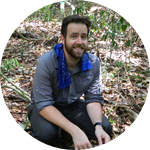Midseason Update, June 18, 2018
Hello from the field!We just wanted to give you a quick update as we cross the midpoint of our excavation season. The first half of the 2018 PfBAP field season has come to a close and we’re happy t...
Status Update- June 8, 2018
Hi All, Apologies for not updating this project in a while. Over the past academic year, Debora and I have been diligently working on the processing of archaeological soils and the analysis of our ...
Wildlife menace update
I am happy to report that Pierre is alive and well and was busy tormenting the archaeologists at PfB when I left. He still chases cars and would wait for us to return to the truck when I would go a...
Lab Work in the Field, 2017
Following the sad departure of Debora, Tom set to work processing the dry sieve and flotation sediments collected from La Milpa. Tom and his students only focused on three of the units (two on the ...
Mesoamerican Ethnobotanical Database
Previous work by Dr. Jon Hageman of Northeastern Illinois University at the Programme for Belize Archaeological Project has resulted in the publication of Mesoamerican Ethnobotanical Database. This...
Wildlife From Previous Seasons
Aside from the amazing archaeology, the Belizean jungle is also host to some truly wonderful creatures. Here are some that we encountered during previous seasons. These photos were ...
